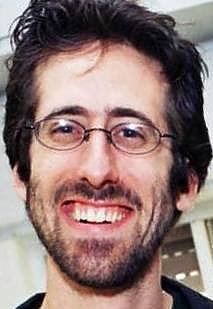Our parshah, Vayechi,[1] is bookended by two deaths, those of Jacob and Joseph. Both men make their successors swear to lay their bones to rest in the land of Israel, and these promises are ultimately fulfilled.[2] What is the significance of this return of Jacob and Joseph’s bones to the land of Israel? Our answer is found in the un-vocalized text of the Torah, where bones (atzamot) can also be read as essence (atzmut).[3] That is, the taking up of Joseph and Jacob’s bones is, in fact, a liberation of their essences from the bondage of Egypt.
Comparing Egyptian and Jewish burial practices illustrates the vast cultural differences between the two societies. In Egypt, as the Torah explicitly points out, the dead are embalmed, mummified and placed in a coffin or sarcophagus to be preserved.[4] As illustrated by the Hebrew word for Egypt (Mitzrayim), which is connected to the root word tzar, meaning narrow, Egypt was a society of narrowness, of restriction and oppression, of slavery, death and abuse. So too, Egypt’s burial practice was one of restriction, sealing off, preservation and narrowness. In contrast, in a Jewish burial, the body must be free to return to the ground.[5] This is especially true in Israel, the final burial place of both Jacob and Joseph, where the beloved’s body is returned to the ground without a coffin, wrapped only in a simple white shroud. Here, the bones and essence of a person are not confined, but liberated to return to the source from whence they came. It is in these two societies’ treatment of bones (atzamot) that their essence (atzmut) is revealed. The narrowness of Mitzrayim is contrasted with the openness, liberation and transformation of Israel.
The exodus of Jacob and Joseph’s bones and essence, then, represents the entire process of liberation from Egypt. It precisely demonstrates the importance of the dual liberation of both body (atzamot) and spirit (atzmut), and the movement from narrowness to expansive liberation.[6] Indeed this dual reading of the Hebrew root points us toward an understanding that the liberation of body or spirit alone is insufficient. A liberated body without spirit is only a corpse, while a liberated spirit without body is simply a ghost. Only together, bones and essence, is liberation of the full human being achieved.
Exile and redemption, slavery and freedom, are not merely historical events. Rather, the Sefat Emet, a Polish Chassidic Rebbe,[7] teaches that both exile and redemption, Egypt and Israel, are deep truths that occur in every place, in every person and in every time. Indeed, exile and slavery are only too present in contemporary societies. Across the developing world the physical enslavement of poverty, hunger and disease exiles human beings from their inherent potential. The physical exile is manifest in the overwhelming lack of basic resources: the scarcity of food, clean water and medication, as well as essential means of economic development, such as seeds, livestock and tools. Liberation is only possible when people are able to provide for their physical needs and thus liberate their bones from the narrowness of poverty.
At the same time, the spiritual enslavement of lack of education, political voice, community organization and human rights traps citizens of the developing world in a second exile. Only when people are empowered to have the social and political resources necessary to succeed—to live without fear of oppression and violence, the freedom to collaborate with their neighbors and to have the opportunity to participate in the decisions which affect their lives—only then can their essence be freed.
In the case of international development, this is what redemption means. To truly succeed, we must recognize that these two exiles are one. Our aim is neither freed corpses nor freed ghosts, but fully flourishing human beings. For that reason, AJWS works to fight against poverty and for community development, to fight against hunger and for human rights. The narrowness of Egypt exists all around us. The urge to narrow, to restrict others and to preserve privilege can be seen on every level, whether of the individual, the community or the state. Yet just as Egypt exists in our time, so too does redemption. It is only as one, with each other and aided by the divine, that both the bodies (atzamot) and spirits (atzmut) of all those trapped in the narrowness of oppression can be freed. And it is only as one, as both body and spirit, bones and essence, that true redemption is possible.
[1] Literally, “lived,” expressing the joining of life and death.
[2] Bereshit 47:29-31, 49:30, 50:1-14, 50:24-6, Shmot 13:19
[3] As the Torah does not include vowels, the two words are written precisely alike and could be vocalized in either way.
[4] Bereshit 50:2
[5] In the Diaspora, when a coffin is used, it must allow for the decomposition of the body into the earth, and the boundaries of the coffin must not be preserved over time. Jews are often buried in wooden coffins that will decompose, rather than metal coffins (as the Midrash indicates was done to Joseph in Egypt), and holes are drilled in the coffin to expose the body to the surrounding earth.
[6] So important was this aspect of liberation that in order for redemption to occur, Moses, the Mechilta tells us, must seek out and liberate Joseph’s bones, which have been cast into the Nile in an iron coffin (Mechilta d’Rashbi 13:19). Note again the contrast between the iron coffin of Egypt and the cloth burial shroud of Israel.
[7] R. Yehudah Leib Alter of Ger

